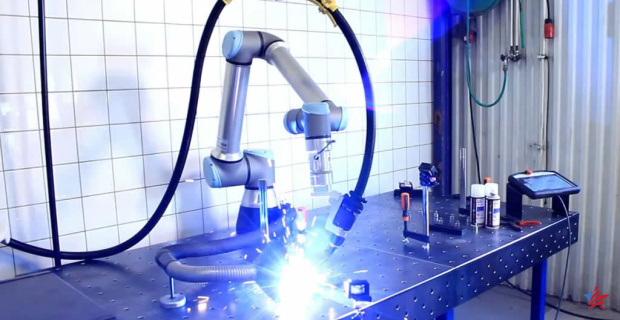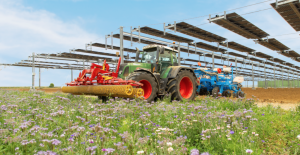In the ever-evolving landscape of welding technology, the advent of collaborative robot welders, or Cobot Welders, has ushered in a new era of efficiency, precision, and safety. This article takes a deep dive into the world of next-gen welding, exploring the capabilities, benefits, applications, and future trends surrounding Cobot Welders, with a specific focus on the keyword ‘robotic arc welding’.
Welding, a cornerstone of manufacturing, has undergone a remarkable transformation with the introduction of collaborative robot welders. These advanced machines, capable of working alongside human operators, are redefining the traditional welding landscape. The significance of Cobot Welders lies in their ability to enhance precision, safety, and overall efficiency in welding processes.
Understanding Cobot Welders
Collaborative robot welders, or Cobot Welders, are a specialised category of welding technology designed to work collaboratively with human operators. Unlike conventional welding robots, cobots offer increased flexibility, adaptability, and ease of integration into existing manufacturing processes. Key features include advanced sensors, adaptive programming capabilities, and a focus on enhancing collaboration between humans and machines.
In contrast to traditional welding methods, Cobot Welders bring a new level of versatility to the welding floor. Traditional welding robots are often confined to fixed positions, whereas cobots can navigate dynamic workspaces, making them suitable for a variety of welding applications. This flexibility allows for more agile and responsive manufacturing environments.
The adoption of Cobot Welders is driven by significant technological advances. Improved artificial intelligence, machine learning algorithms, and advanced sensor technologies enable cobots to perform complex welding tasks with unparalleled precision. The seamless integration of these technologies into Cobot Welders ensures enhanced performance, reliability, and adaptability inrobotic arc weldingand similar scenarios.
Benefits and Advantages of Cobot Welders
Cobot Welders excel in delivering precise and accurate welds, surpassing traditional welding methods. The incorporation of advanced vision systems and sensors enables cobots to precisely locate welding points, adjust to variations in material thickness, and maintain a consistent weld quality, contributing to a higher overall product standard.
Safety is a paramount concern in welding environments, and Cobot Welders address this concern with their collaborative nature. Equipped with force and torque sensors, these cobots can detect the presence of humans and adjust their movements accordingly, minimising the risk of accidents. This collaborative approach creates a safer working environment for both humans and machines.
Applications of Cobot Welders in Different Industries
Cobot Welders find extensive application in automotive manufacturing, where precision and speed are paramount. These robots contribute to the welding of vehicle components, ensuring the production of high-quality, reliable automobiles. Their adaptability allows them to handle a variety of welding tasks in different stages of the manufacturing process.
In the aerospace industry, where the demand for precision and quality is critical, Cobot Welders play a pivotal role. These robots contribute to the welding of aircraft components, ensuring structural integrity and meeting stringent safety standards. The collaborative nature of cobots enhances their use in intricate welding tasks within the aerospace manufacturing environment.
Features that Make Cobot Welders Suitable for Various Welding Tasks
One of the defining features of Cobot Welders is their adaptive programming capabilities. Unlike traditional welding robots that require intricate programming for each task, cobots can be easily programmed and reprogrammed for different welding applications. This adaptability allows manufacturers to respond quickly to changing production needs.
Cobot Welders leverage advanced sensing technologies, including vision systems and sensors, to enhance their welding capabilities. These technologies enable cobots to detect variations in material properties, adjust to changes in the welding environment, and ensure precise and consistent weld quality across diverse welding tasks.
Challenges and Solutions in Implementing Cobot Welders
One challenge in implementing Cobot Welders is the need for operators with the skills to program and collaborate with these advanced machines. Training programs and educational initiatives are essential to equip operators with the necessary skills to potentially maximise the potential of Cobot Welders in welding applications.
Integrating Cobot Welders into existing manufacturing processes can pose challenges, particularly in environments accustomed to traditional welding methods. Manufacturers need to carefully plan the integration process, considering workflow adjustments, infrastructure modifications, and employee training to ensure a smooth transition.
Environmental and Safety Considerations in Cobot Welding
Cobot Welders contribute to a reduced environmental impact compared to traditional welding methods. The precision and efficiency of these robots result in less material waste, reduced energy consumption, and a smaller carbon footprint. This aligns with the growing emphasis on sustainable manufacturing practices.
Occupational safety in welding environments is a primary concern, and Cobot Welders address this by reducing the risk of accidents. The collaborative nature of cobots, coupled with advanced safety features, ensures a safer working environment for human operators. This focus on occupational safety aligns with industry regulations and standards.
Conclusion
In conclusion, the exploration of Cobot Welders reveals a transformative force in the world of welding technology. These collaborative robots bring unprecedented precision, safety, and efficiency to the welding floor, impacting diverse industries. From automotive manufacturing to aerospace applications and construction projects, Cobot Welders are reshaping the future of welding, paving the way for a new era of next-gen welding capabilities.




















